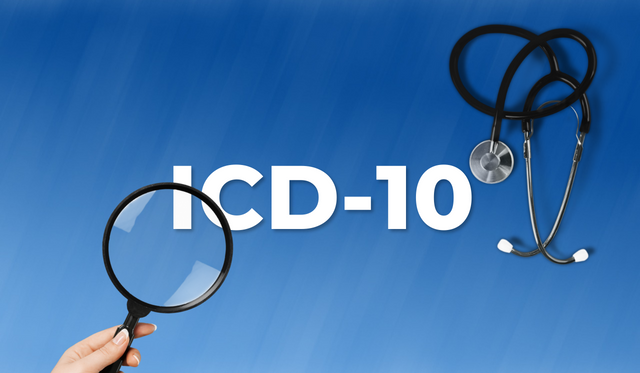The United States HCFA, now known as CMS, supported a preliminary design effort to replace volume 3 of the ICD-9-CM in 1992. In 1995 HCFA granted 3M Health Information Systems (HIS) 3-year contract to design a process code replacement system. ICD-10-PCS was continuously amended and updated in the years between development and implementation, often behind the scenes. However, as execution approached, the industry was aware of any changes to prepare for the transition from ICD-9-CM Volume III to ICD-10-PCS.

Introduction:
ICD-10-PCS system used in the United States for coding operations and services offered in hospitals’ inpatient settings. The Centers for Medicare & Medicaid Services (CMS) and the National Centre for Health Statistics (NCHS) developed the US version of ICD-10, which includes two following two medical code sets:
- ICD-10-CM
- ICD-10-PCS
On October 1, 2015, ICD-10-CM and ICD-10-PCS became mandatory for medical claims reporting. However, the two code sets are drastically different. These codes not only respond to various diagnoses but can also deliver better and more up-to-date data for overall patient and health care improvement.
The revised ICD-10-PCS code set includes more codes than the ICD-9 version, which aids in meeting modern health information needs. All Health Insurance Portability and Accountability Act (HIPAA) transactions must utilize ICD-10-PCS codes.
Difference between ICD-10-PCS and ICD-10-CM
- In the United States, ICD-10-PCS is only used in inpatient hospital settings. In the United States, ICD-10-CM is implemented in clinical and outpatient settings.
- ICD-10-PCS contains around 87,000 possible codes. ICD-10-CM has around 68,000 codes.
- ICD-10-PCS codes can be any combination of digits and letters. All subsequent digits must be numbers or the first digit must be either a number or a letter.
Structure of the code
The Centers for Medicare and Medicaid Services (CMS) collaborated with 3M Health Information Management to develop the ICD-10-PCS to compare international morbidity and mortality statistics.
To specify medical treatments, the system employs 3 to 7-digit alphanumeric codes.
- 1ST digit denotes the area of medical practice (operation, management, assessment and monitoring, and so on)
- The subsequent digits denote the body system, core operation, body part, approach, and device employed.
- The seventh letter is a digit that qualifies.
The first three digits of a code are recorded in the ICD handbook for future reference.
Example:
047K0ZZ: This is the ICD-10-PCS code for an open approach to right femoral artery dilatation.
Guidelines Updates for ICD-10-PCS
CMS published the Official ICD-10-PCS Coding Guidelines for the Fiscal Year 2022 in 2021, which entered into effect on October 1. The FY 2022 PCS standards include the following three adjustments to the Medical and Surgical parts.
- B3.7
- B4.1c
- B4.8
Apart from this, two revisions to the New Technology section were also introduced.
- E1.a
- E1.b
Guideline B3.7
The vocabulary in Guideline B3.7 has been refined. The basic operation “Control” is used when:
- A process done to establish homeostasis employs procedures that go beyond what is considered essential to the procedure
- A more specific root operation does not specify the procedure.
Guideline B4.1c
This guideline and its accompanying Example have been updated to explain the correct body part character assigned when a process is conducted on a continuous section of a tubular body part.
According to the FY 2021 Guidelines, the correct body part to be given is “the furthest anatomical place from the point of entry.”
However, according to the FY 2022 Guidelines, the correct body part designated is “anatomically most proximal (closest to the heart).”
Guideline B4.8
The root operation “Insertion” has been added to Guideline B4.8 after being accidentally left out. It should be noted that, despite the addition of Insertion to the guideline, no new codes were created due to this change.
Guideline E1.a
The preceding code (XW04321 Introduction of Ceftazidime Avibactam Anti-infective into Central Vein, Percutaneous Approach, New Technology Group 1) has been deleted from the example given with Guideline E1. a. Although the Example has changed, the instruction has not.
Guideline E1.b
The Example of a magnetically controlled growth rod implanted during spinal fusion in Guideline E1.b has been replaced. We now have a new instance of an extracorporeal flow reversal circuit setup. Although the Example has changed, the advice has not.
To ensure appropriate coding and reporting, read the 2022 ICD-10-PCS Official Guidelines for Coding and Reporting in their entirety.
About us
Billing Executive – a Medical Billing and Coding Knowledge Base for Physicians, Office staff, Medical Billers and Coders, including resources pertaining to HCPCS Codes, CPT Codes, ICD-10 billing codes, Modifiers, POS Codes, Revenue Codes, Billing Errors, Denials and Rejections.
We have more than 10 years experience in US Medical Billing and hand-on experience in Web Management, SEO, Content Marketing & Business Development with Research as a special forte.
Learn More:
A Comprehensive Guideline To ICD-10 Codes
Notable Changes on CPT Code for 2021
CPT Codes for CT Scan and Imaging Services
Complete List of Place Of Service Codes (POS) for Professional Claims
